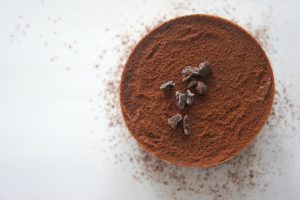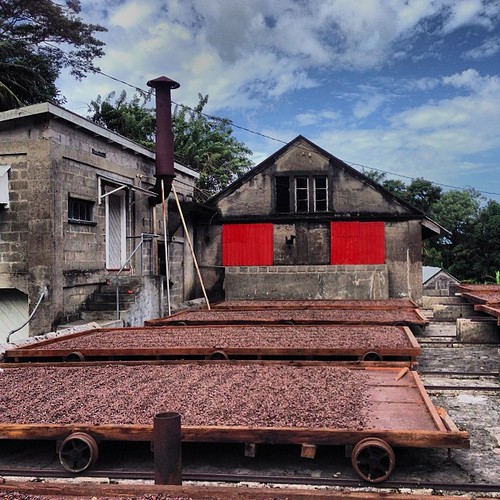Cocoa, the key ingredient in chocolate, has a long and rich history in the Caribbean islands. These tropical paradises have played a significant role in the cultivation and production of cocoa, contributing unique varieties and flavors to the global cocoa industry. The climate and soil conditions in the Caribbean provide an ideal environment for cocoa trees to thrive and produce high-quality beans. This perfect combination has made the Caribbean islands a hub for cocoa production and has shaped the region’s historical significance in the industry.
The Caribbean islands have long been recognized for their contribution to the world of cocoa. The favorable climate and soil conditions have created an environment where cocoa trees can flourish, producing beans with distinct flavors and aromas. This has led to the development of unique cocoa varieties in the region, each with its own characteristics and attributes. The Caribbean’s cocoa industry has faced challenges over the years, including declining production in some countries. However, cocoa entrepreneurs and industry leaders are working diligently to revive and innovate the sector, ensuring the Caribbean’s continued influence on cocoa growing.
Historical Significance of the Caribbean Islands
The Caribbean islands have a rich history in cocoa production, with countries like Trinidad and Tobago once known as the “cocoa capital of the world”. The region’s cocoa industry has faced various challenges, including declining production in Trinidad and Tobago. However, efforts are underway to revive the sector and make Trinidad and Tobago a top global confectionery producer. These efforts include the use of intellectual property (IP) rights to protect brands and enhance the competitive profile of Trinidad and Tobago in international markets. By leveraging their unique cocoa heritage and implementing innovative strategies, the Caribbean islands are reclaiming their historical significance in cocoa growing.
Unique Cocoa Varieties in the Caribbean



The Caribbean is home to a variety of unique cocoa varieties that contribute to the diversity of flavors in the chocolate world.In the Dominican Republic, the primary type of cocoa grown is a Trinitario hybrid, a cross between Criollo and Forastero varieties. This hybrid variety is known for its excellent flavor profile and is highly sought after by chocolate makers.Grenada, on the other hand, has loamy, volcanic soil that supports the growth of fine flavor cocoa trees. These trees produce beans with distinct flavors and aromas, making Grenadian cocoa highly regarded in the industry. Trinidad and Tobago also produces high-grade cocoa beans, particularly the Trinitario variety. These unique cocoa varieties contribute to the Caribbean’s reputation for producing exceptional cocoa beans, each with its own flavor profile and characteristics.
Impact of Climate and Soil Conditions in Caribbean Cocoa Production
- Critical Importance: The climate and soil conditions in the Caribbean are pivotal in determining the success and quality of cocoa production in the region.
- Dominican Republic’s Favorable Climate: The Dominican Republic boasts a climate highly conducive to cocoa cultivation, characterized by warm temperatures, abundant rainfall, and minimal issues related to diseases and pests.
- Fertile and Volcanic Soil: Both the Dominican Republic and Grenada benefit from fertile soil conditions. Grenada, in particular, has volcanic soil that enriches the ground with essential nutrients conducive for cocoa tree growth.
- Optimal Growing Environments: The combination of favorable weather conditions and fertile soil creates an optimal environment for cocoa trees to flourish, which in turn results in the production of high-quality cocoa beans.
- Unique Flavor Profiles: The unique climatic and soil conditions contribute to the distinct flavor and quality of the Caribbean cocoa beans, making them a prized choice among chocolate connoisseurs around the world.
Caribbean’s Contribution to the Global Cocoa Industry
- Dominican Republic’s Leadership in Organic Cocoa Production: The Dominican Republic stands out as not only the largest producer of cocoa in the Caribbean but also the largest producer of organic sustainable cocoa globally. This highlights the region’s commitment to sustainable and environmentally friendly cocoa production practices.
- Grenada’s Chocolate Production: With the highest number of chocolate factories per capita, Grenada significantly contributes to the Caribbean cocoa industry. This also helps in promoting the Caribbean as a notable destination for chocolate enthusiasts.
- Economic and Industrial Growth: The chocolate-making enterprises in Grenada not only foster economic growth but also help in the industrial development of the region by creating more job opportunities.
- Quality Enhancement Initiatives in Trinidad and Tobago: Despite a recent decline, Trinidad and Tobago’s cocoa industry is focused on adding value to raw cocoa beans, improving quality, and raising brand awareness, which is reflective of the region’s dedication to producing high-grade cocoa.
- Establishing a Strong Global Footprint: The diverse contributions from these Caribbean nations further solidify the region’s importance and reputation in the global cocoa market. Through organic, sustainable practices and quality improvement initiatives, the Caribbean continues to establish itself as a key player in the global cocoa industry.
Challenges and Opportunities for Cocoa Growers
Cocoa growers in the Caribbean face various challenges and opportunities. Some of the challenges include the need for more training to improve fermentation and drying practices. Proper post-harvest techniques are essential for achieving high-quality cocoa beans. Infrastructure improvements, such as roads, are also necessary to transport cocoa beans efficiently. These challenges can hinder the productivity and profitability of cocoa growers in the region. However, there are also opportunities for cocoa growers in the Caribbean. They can explore high-end, niche markets that value the unique flavors and characteristics of Caribbean cocoa. Agro-tourism is another potential avenue for cocoa growers to showcase their products and attract visitors.The success of cocoa ventures in Puerto Rico has sparked interest from other farmers in reviving chocolate-making on the island, creating new opportunities for the cocoa industry.
Despite the challenges faced by cocoa growers in the Caribbean, there are opportunities for growth and development. By focusing on improving post-harvest practices and investing in infrastructure, cocoa growers can enhance the quality and marketability of their cocoa beans. Additionally, the unique flavors and characteristics of Caribbean cocoa present opportunities to target high-end, niche markets that value these attributes. Furthermore, exploring agro-tourism as a means to showcase Caribbean cocoa products can attract visitors and create additional revenue streams for cocoa growers. By capitalizing on these opportunities, cocoa growers can overcome challenges and ensure the continued success of the Caribbean cocoa industry.
Conclusion
The Caribbean islands have had a significant influence on cocoa growing, contributing unique cocoa varieties and flavors to the global industry. Despite the challenges faced by cocoa growers in the region, such as declining production and infrastructure limitations, there are still great opportunities for growth and development. The favorable climate and soil conditions in the Caribbean, along with the efforts of cocoa entrepreneurs, position the region as a premier chocolate destination. As the Caribbean continues to revive and innovate its cocoa industry, it will undoubtedly play a crucial role in shaping the future of chocolate. The historical significance, unique cocoa varieties, and contributions to the global industry all showcase the Caribbean’s prominent place in the world of cocoa.

